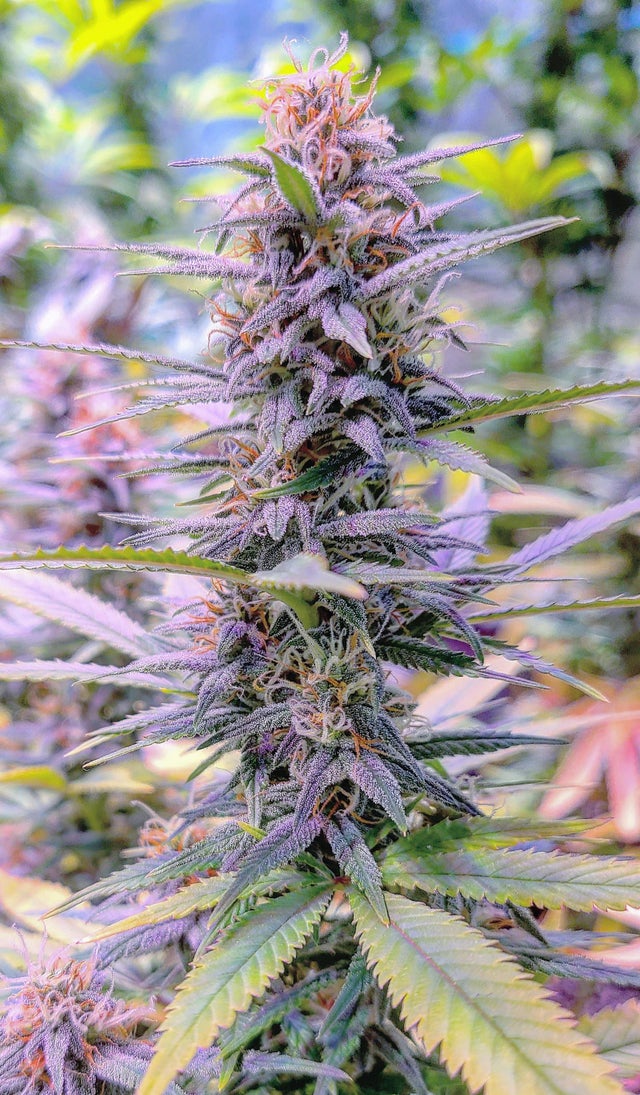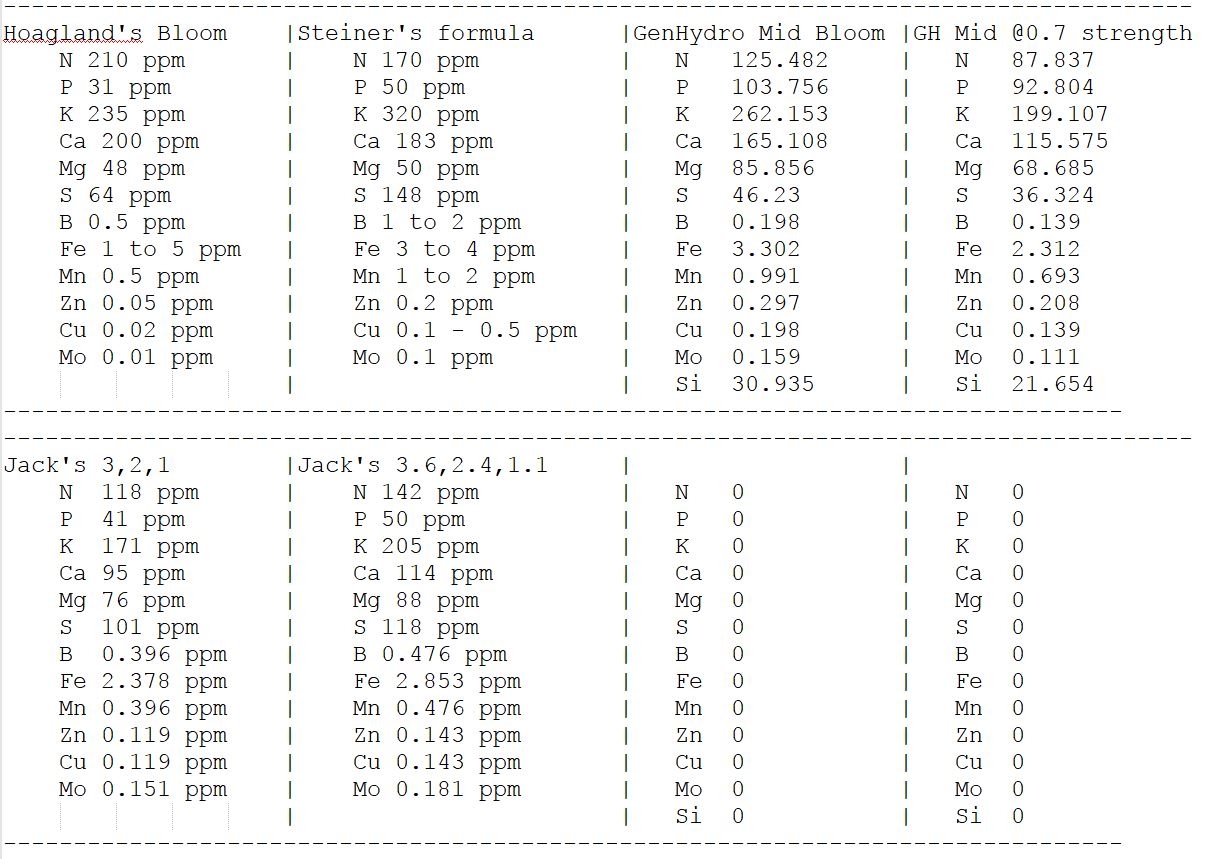Growing Organic Cannabis: Part 3

( Photo Credit: u/Express-Window-4067, Super Lemon Haze, day 38 of flower )
Macro Nutrients
Macro nutrients are going to make up the bulk of what your plants will consume, and this is going to be the main focus of your efforts to keep your Cannabis well fed as a grower.
A common misconception about the Macro Nutrients is they are N-P-K. They are not.
The macro nutrients are actually N-P-K-Ca-S-Mg:
- Nitrogen (N)
- Phosphorus (P)
- Potassium (K)
- Calcium (Ca)
- Sulfur (S)
- Magnesium (Mg)
In his excellent book "Teaming with Nutrients" Jeff Lowenfels wheels out an important artifact from agricultural history:
Justus Von Liebig, considered by most as the father of modern agricultural science, again contributed to the field in 1863 when he proposed the Law of the Minimum.
It states, “A manure containing several ingredients acts in this wise: The effect of all of them in the soil accommodates itself to that one among them which, in comparison to the wants of the plant, is present in the smallest quantity.”
In other words, plant growth is limited by the least abundant mineral, no matter how abundant the other minerals happen to be.
Cannabis is a hungry plant, it needs the right foods at the right quantities, and ratios, to sustain healthy growth and flower production.
By volumetric weight your plants will consume Nitrogen, Potassium, and Calcium the most.
The goal is to find each plants ideal sweet zone for each specific nutrient. This can take many repetitions growing the same strain over and over to figure out those precise nuances. But Cannabis is like most other annuals in its needs and desires, so getting the nutrient levels 99% sufficient is pretty good. This brings up an important concept, nutrients can either be deficient, where there is not enough of that nutrient present, and the plant begins to show a deficiency in its growth patterns; or in the opposite sense there is can be an overabundance of a nutrient, which I call "poisoning" and plants display a variety of weird behaviors.
Hydroponics growers have charts that show various nutrient levels for different stages of growth. This is useful from an organic perspective because we can see actual numbers and create guidelines for how much of a given fertilizer to use. Consider the following chart that shows various nutrient concentrations used by different growers.
( Photo Credit: 420magazine.com )
There a few approximate conclusions that we can see from this chart:
- Potassium, Calcium, and Nitrogen are the heaviest concentrated elements in your nutrient soup that you will feed to your plants.
- Magnesium is usually given in proportion to the amount of calcium you are adding to your soil. If my memory serves me correctly, plants need magnesium in order to uptake calcium, so sometimes a magnesium deficiency can also cause a calcium deficiency too.
- Sulfur is often overlooked, but important, nutrient that your plants will need a moderate amount to remain healthy.
Nitrogen (N)
Despite the fact that Nitrogen makes up 77% of our atmosphere, virtually none of this is available to plants. Microorganisms, specifically nitrogen fixing bacteria have developed a specialized trait where they can take atmospheric nitrogen and convert it into ammonium or nitrate, both of which are plant soluble forms of Nitrogen. Nitrogen is so important that over the eons, plants have developed a symbiotic relationship with Nitrogen fixing bacteria.
Nitrogen is crucial for the creation of chlorophyll, and for driving new growth in the plant. Nitrogen is a "mobile element" which means the plant can shift it where it is needed most (towards new growth), which is why nitrogen deficiencies appear as a yellowing of the leaves at the bottom of the plant that will progressively move upwards. A leaf or two yellowing is natural, but if your whole plant is starting to get light green, with the bottom half fading out to yellow, your plant probably needs Nitrogen.
Various sources of nitrogen have different "speeds" at which they release. You as a grower need to be conscious of this so you don't overfeed and induce nitrogen poisoning. Fungus will break down woody material, releasing nitrogen in the form of ammonium. Your plants can feed on this, but unless you are growing outdoors in "Hügelkultur mounds", you will need something that will provide a snappier source of nitrogen.
It is way too easy to poison your plants with too much nitrogen, you can tell when you over did it, the leaves will turn very dark green, followed by the leaves turning crispy brown, if you added too much, you can try and flush the soil with a lot of water, like gallons of water, but beyond that all you can do is wait for your plant to work its way through the high levels of Nitrogen and hope that it will survive. You are better off dosing in small amounts if you feel your plants need a boost, sometimes it can take a few days for the plant to show the effects of the last feeding, so give it a few days before you add more. You don't want your plants to be a light yellow green (though some varieties are naturally a light green, and its not a deficiency), and you don't want your plants to be a dark green either. You want a vibrant in between green like the color of fresh grass shoots.
Nitrogen sources from slow to fast release:
- Feather Meal (slow release, safe to use in soil mix and as an amendment, it won't break down too fast and burn your plant)
- Alfalfa Meal (also a good source of potassium and a special growth hormone called "triacontanol". Alfalfa meal is moderate release, probably safe to use as a top dress, but if you mix it into your soil, you will need to compost it first before planting)
- Guanos / Manures (bat guanos are great sources of nitrogen, as is chicken manure, but both of these sources are "hot" and need to be composted into your soil thoroughly beforehand, or they could potentially burn the plants roots)
- Blood Meal (be VERY careful with blood meal, it is very potent, so in a given feeding you should only be using like 1/2 a teaspoon or less, and only if your plants have turned yellow-green and appear to be lightening up, this is great for a micro-dose feeding, but just use a pinch, any more than that and you could over do it. Plants and soil microorganisms love blood meal, so it gets consumed rapidly in the soil, you should see it take effect within 36-48 hours of feeding)
Getting a steady supply of available Nitrogen into the soil, at a balanced level, can be tricky, but you have several materials that work at different speeds to accommodate your plants needs. The slower the release speed of a given nutrient, the safer it is in slightly larger quantities in your soil and the less you will need to do a top-dressing to amend your soil. The faster the release speed of the nutrient the smaller more petite the dose that can be safely used, and this means that you will re-amend the soil more frequently to sustain the Nitrogen levels.
( Photo Credit: u/ElSembrador420X, Katsu Pupil #1 )
I feel it is my civic duty to mention that inorganic nitrogen fertilizers are a big problem. They are what most commercial farmers use, the susbstance creates a toxic environment for soil microbes, the chemical/inorganic fertilizers end up leaching into ground water, and also into streams and rivers via runoff. When inorganic nitrogen fertilizers make it into bodies of water they cause massive algae blooms that use up all the oxygen in the water, often killing most of the aquatic life. Organic farming isn't "just for fun" or something that "hippies do", continued use of these inorganic fertilizers threatens and jeopardizes the well being of the entire ecosystem when they are used on the massive commercial scale. I live in a farming community, now that I know just a little bit about soil ecology, I can clearly see that modern commercial farming practices are damaging precious top soil -- and that top soil is the only thing between us, and massive worldwide starvation. Growing organic is important!
In part 4 of this series, we will cover the next macro nutrient: Phosphorus.
If you liked this article, hit that upvote button, subscribe if you want, and if you feel like it, drop me a comment below!
Till then, happy toking my fellow stoners!
